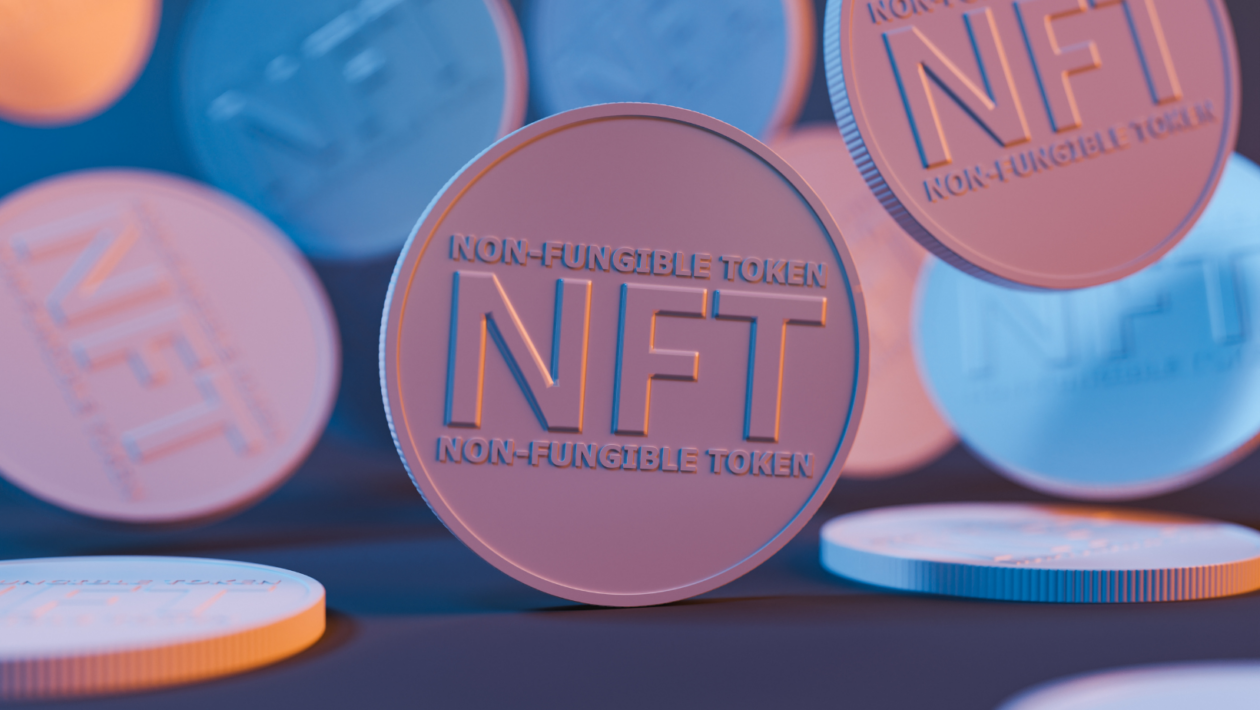To many people, the NFT mania of 2021 didn’t make much sense. Even hardcore crypto evangelists questioned the logic or sanity of paying US$69 million for digital art. So why all the hype? To understand the future of the NFT space, we need first to understand what an NFT is, what it does, what the US$69 million represents and why this is important.
Away from all the shiny pixels and cool graphics, an NFT — or non-fungible token — is simply a digital certificate of ownership registered on a blockchain. It is that simple. Like any new concept, the idea of the NFT required a hook to take hold of the public’s imagination. Without content, ideas remain concepts. Enter NFT digital art.

Worldwide NFT sales leapt from US$95 million in 2020 to US$25 billion in 2021, and with a current market cap of US$38 billion, NFTs represent less than 2% of the overall crypto market. But outside of digital art, what real-world use cases are there for digital proof of ownership?
Creative industries
As you might expect, the first place to look is within the creative industries. Music has come a long way from the cassettes and CDs of the past, with most people today using a streaming service such as Spotify or Soundcloud. In this context, it is easy to see how inevitable it is for the music industry to adopt NFTs that enable not only proof of ownership but allow for easier management and distribution.
The typical revenue split in the U.S. music industry has always been 50-50. Artists and entertainers could be expected to receive 50% of profits, with the remainder split between agents, lawyers and distributors. The figures are even worse via streaming services, with the majority of Spotify’s top 1% of artists earning less than US$50,000 in streaming revenue.
NFTs are providing transparency and accessibility to the art world like never before, ensuring musicians and artists alike are fairly compensated for their work. Furthermore, NFTs give the creator control over publishing and distribution avenues, eliminating the need for agents and intermediaries. As it stands, creators often relinquish control over their material when they sign with a platform resulting in difficulty tracing the distribution of material.
NFTs — or digital tokens in some circles — are set to redefine how we consume content. By minting their creation into an NFT an artist can sell or retain ownership from the start. If the NFT sells, the artist will automatically receive royalties for every sale thereafter. The record of ownership stored in the metadata of the NFT makes this a revolutionary time for music.
Gamified metaverse
In 2021, California-based video game publisher Electronic Arts told investors that NFTs were “an important part of… the future of our industry.” In a scene reminiscent of Ready Player One, a gamified metaverse looks very appealing, but how far away are we from this vision of the future?
With over 3.24 billion gamers across the globe, this is a market with massive potential for NFT adoption. The popularity of online games such as Fortnite and Call of Duty has led to a legion of fans eager to customize and personalize their characters and kit. Furthermore, the rise of cryptocurrency trading among young people is poised to cross over into the video game industry via the integration of the NFT. Personal items, weapons, skins and rewards can all be minted as NFTs and traded on the open market. Such a sea change in the way people access and interact with video games brings diversification and personality to the market, switching up the traditional approach.
Traditionally if a player wanted to purchase a new outfit or item for a character, they would only have one place to buy — the game publisher. With the emergence of an NFT gaming ecosystem, a player can now buy from a variety of sellers opening up markets for independent NFT design and retail outlets. This de-monopolization is a major shift in the industry structure and is one of the underlying fundamentals of the rise of NFT. Newly decentralized economies will attract new entrants and encourage fairer and more sustainable industries.
Digital identity
Another developing market for NFTs comes in the form of digital identity and cybersecurity. In both the online and real-world, personal identity is becoming increasingly difficult to protect. These forms of NFTs can work in tandem with other security elements to produce highly effective and verifiable cybersecurity methods.
Blockchain-based privacy platforms are developing ways to integrate NFTs and facilitate digital transaction signatures, encrypted messages and data storage. In addition, NFTs can interact with authenticators to provide identity information. Because each NFT is unique and cryptographically secure, they have the potential to provide the backbone for a new generation of cybersecurity.
Verifiable proof of ownership
The emergence of NFTs has been one of the success stories of crypto. According to a 2021 report by Morgan Stanley, luxury fashion NFTs, from brands like Louis Vuitton and Gucci, are expected to achieve a US$25 billion segment of a US$300 billion market by 2030; evidently, NFTs are here to stay. However, the ecosystems and environments where NFTs achieve their full potential are still defining themselves, and the context for the NFT may seem a lot clearer within the next five years.
NFTs have the opportunity to level the playing field and contribute to a decentralized version of the future. One where people interact, socialize and trade independently without the need for intermediaries taking their share of the profit.
Eric Anziani, COO of Crypto.com, told the Financial Times: “The NFT will enable people to demonstrate and have an identity across platforms that they can clearly own and use on different ecosystems.” The transformative power of the NFT from a closed-loop environment (such as a social media platform or video game) to an open one, he adds, “is very powerful. And we’re just touching the surface today on the capabilities that can be built on top of that. Today it’s trading assets such as gaming items; one day, it will give us free movement in the metaverse”.
NFTs ensure a fair and transparent environment for both creators and consumers. Alongside the metaverse, the ownership of virtual property will bring digital identity to the fore and increase the need for verifiable proof of ownership.




